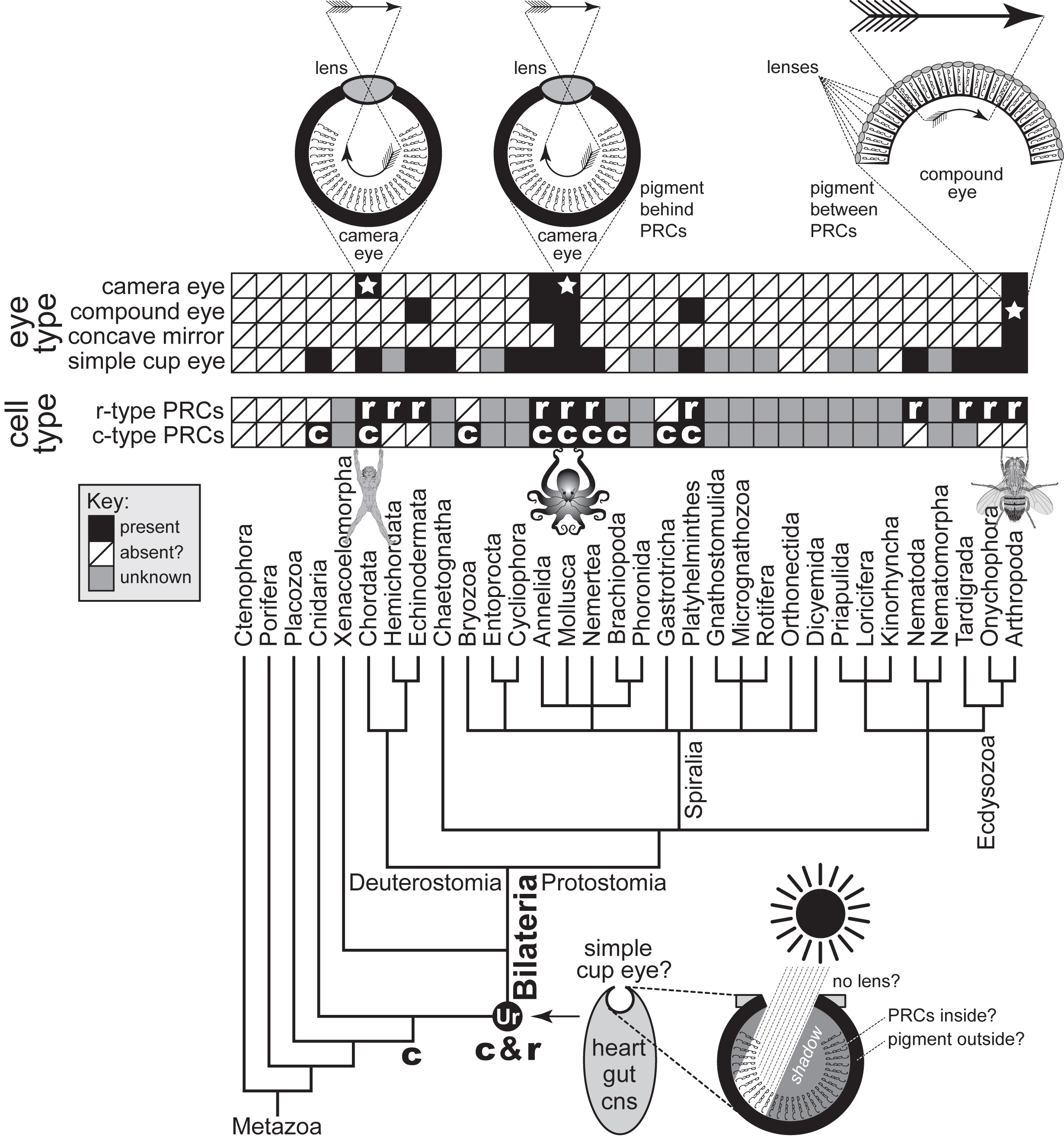

Deep Homology?
  |
Deep Homology? |
 Distribution of light-sensing cells and organs across animal phyla. Black squares indicate presence of the trait in at least some members of the phylum, slash marks denote its absence in all species examined thus far, and gray squares signify insufficient data to draw any conclusion (see key). The mere presence of c- or r-opsin genes does not warrant a "c" or "r" label here (see Fig. 10 for definitions), which is only given if stacked membranes are also present. Thus, the "r" in the chordate box is not due to humans (our ganglion cells lack rhabdoms), but rather to our protochordate kin. Arthropods possess c-type opsins, but no definitive c-type photoreceptors (PRCs) have yet been found. Based on the prevalence of c- and r-type PRCs among phyla, it is likely that both types of PRC were present in Urbilateria. Data on eye types come from Land and Nilsson's Animal Eyes. For 10 phyla we can rule out camera, compound, and mirror optics but don't yet know (until behavioral experiments are done) whether the organs are small cup eyes or merely "eye spots". The prevalence of simple cup eyes suggests that the first bilaterian eyes were of this kind: lined with PRCs and cloaked with shielding pigment. Such a cup can detect the direction of light because its pigment layer casts shadows on its PRC layer (inset), and it could even see images if the opening (pupil) were to shrink to a Nautilus-style pinhole. Based on amphioxus and onychophorans, urbilaterians may have had a single median eye as depicted here, rather than a pair of lateral ones, though its median eye may have been ventral instead of dorsal. The inferred sequence of heart, gut, and central nervous system (cns) along the D-V axis is explained in Fig. 5. Sophisticated eyes only evolved three times: in chordates, cephalopod molluscs, and arthropods (starred boxes). Octopus eyes look eerily like human eyes (cartooned above) -- complete with cornea, iris, ciliary muscles, and eyelids (omitted for clarity) -- despite having evolved separately. Spiders and scorpions (phylum Arthropoda) have camera eyes, while insects and crustaceans rely mainly on convex compound eyes (sketched above). Even so, flying insects also use camera-like ocelli to gauge their posture relative to the horizon. Camera eyes invert images (arrow), whereas compound eyes do not. Vertebrates put shielding pigment behind the PRCs, whereas insects wedge it between them. |
Introduction: cover image Body axes: figure 2 | figure 3 | figure 4 | figure 5 | figure 6 Nervous system: figure 7 | figure 8 Vision: figure 9 | figure 10 | figure 11 | figure 12 | figure 13 Touch and hearing: figure 14 | figure 15 Smell and taste: figure 16 Limbs: figure 17 Epilogue: figure 18 The Interactive Fly resides on the web server of the Society for Developmental Biology. |